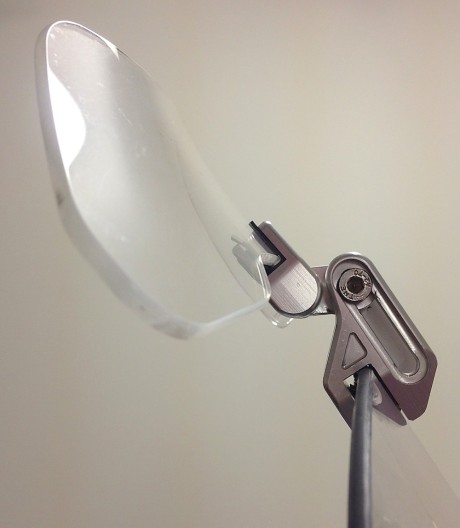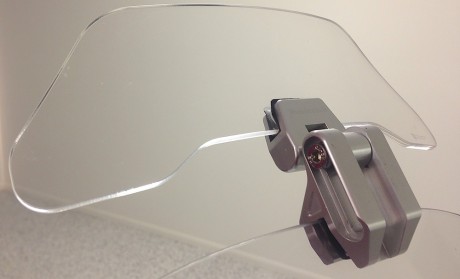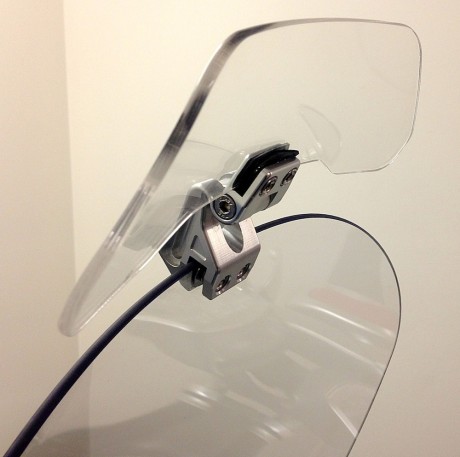I’ve never been a big fan of windscreens, but the Wunderlich windscreen extension has allayed most of my concerns.
Mostly windscreen just introduce annoying buffeting and a loss of that sense of freedom. Behind some big touring screens it’s almost being in a car, only without a wiper blade to clear the rain.
Despite some modern bikes looking very aerodynamic, very few are designed in a wind tunnel. It’s too expensive. Instead, I think the designers just guess at the aerodynamics of the windscreen.
I own one of the last of the air-cooled BMW R 1200 GS which is a great bike but has a terrible windscreen. After a day of riding, my neck would be sore from the turbulence which grabs at the peak on my helmet and tosses my head around. My ears would be ringing from the constant noise and I’d feel quite fatigued. It‘s so bad, I stopped wearing a peaked helmet.
A couple of friends with the same bike have bought aftermarket windscreens and are happy. I’ve tried them and they have less buffeting but still a constant stream of wind noise.
The problem with windscreens is they are subjective. It depends on how tall you are and how you position your body on the bike. Two people of the same height may experience different buffeting behind the same windscreen because one might slouch forward while the other sits upright.

What is needed is an aerodynamic screen that is adjustable for riders’ height. It also needs to be adjustable on the run as there are different aerodynamic forces at play at different speeds.
In the absence of a factory adjustable screen, the Wunderlich screen extension (imported by Motorcycle Adventure Products) is a good accessory and only costs $149 which is far cheaper than an aftermarket replacement screen.
It fits on the top of almost any windscreen (but not the BMW F 800 GS with the dip in the middle) via a couple of allen key bolts that grip on to a piece of rubber, so there is no drilling required. That means the extension can be quickly moved from bike to bike.
It can also be adjusted up, down, forward, back and tilted via more bolts.
There is no perfect position and everyone will have a preference. For me, the best position was slightly forward and high of the existing windscreen which creates a laminar flow or streamline that reduces aerodynamic back pressure.
In this position, it is great on the highway, however, at lower speeds there can be some turbulence.

At idle the boxer engine makes the screen vibrate thanks to the screen extension placing extra weight on the end of the screen.
However, that vibration goes away with engine revs.
At the ideal height, I’m slight looking over the top of the screen, but with fine rain or mist, I duck down a little and look through the gap between the screen and the extension. Here my visor cops no mist and I have a perfectly clear view.
Wunderlich suggests securing the fixing and adjustment screws with thread locking fluid, but I haven’t found it necessary despite taking my bike over some rough off-road tracks.
The screen extension never shifted, even though I had the adjustment bolts – but not the fastening bolts – slightly loose for on-the-fly adjustment. However, it would pay to regularly check the bolts haven’t come loose. If you don’t lock the bolts on, then you can use the fitting on any other bikes you may have.
I also tried it on a Suzuki C50T cruiser. Even though the windscreen is high, it has a fair amount of turbulence. That is, until I fitted the Wunderlich extension. Problem solved.
My only grouch about the product is that it has two different bolt sizes which is just plain annoying.
I still love a bike without a screen, but I can now see the advantages of a good screen: it keeps the chill off, stops most of the rain, keeps the bugs off your visor, it’s quieter and it’s less fatiguing on your arms.
Price: $148
Click here to order.


